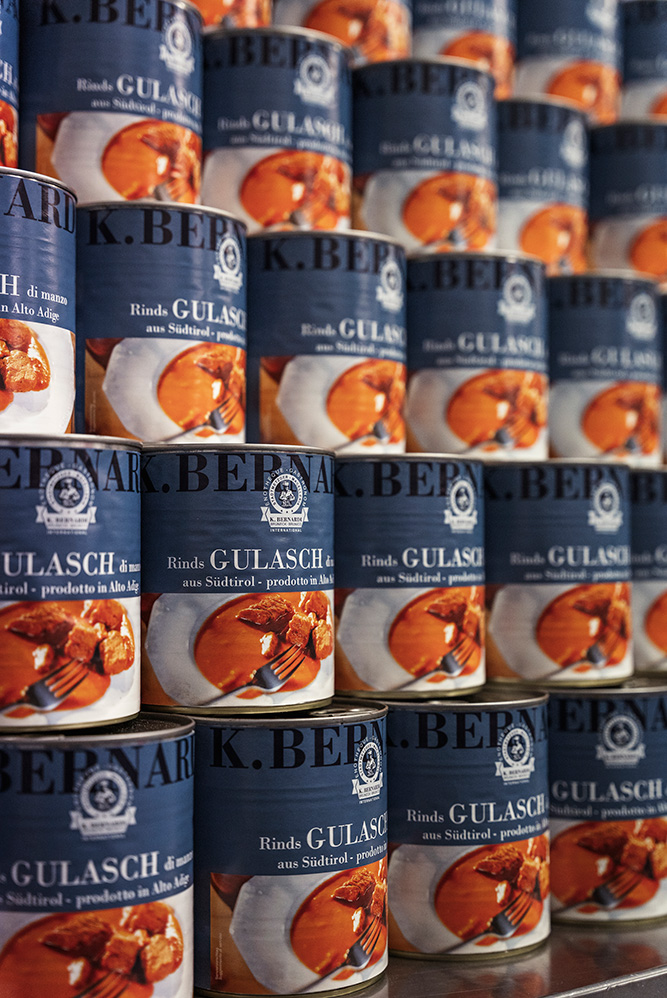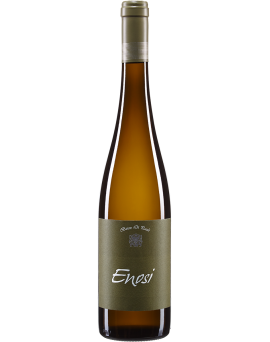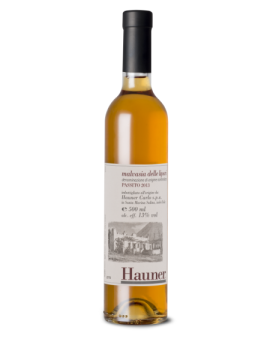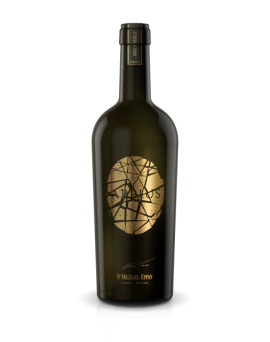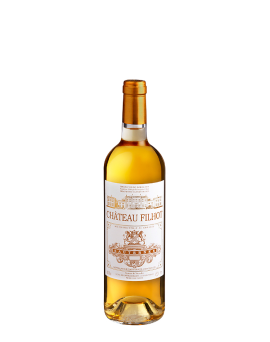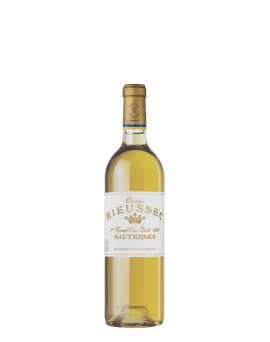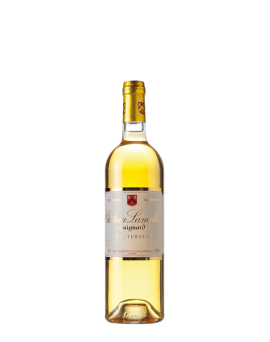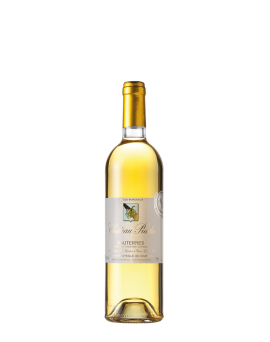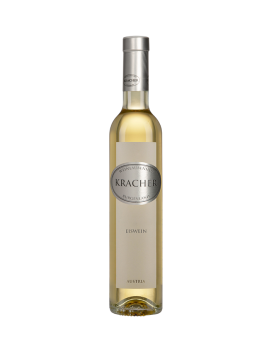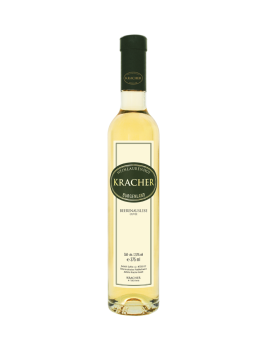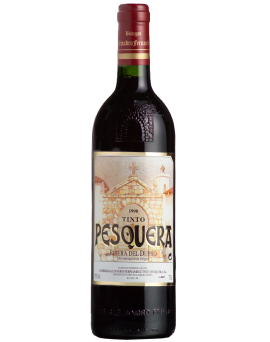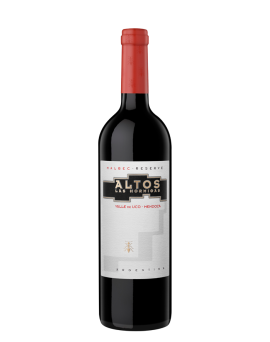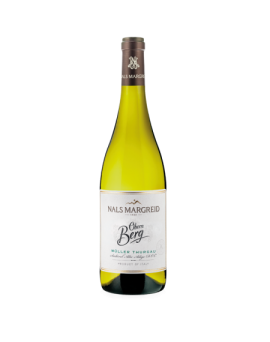Basket
0
Active filters
Malvasia Lipari DOC Passito...
Malvasia delle Lipari<br />DOC passito<br /><br />THE COMPANY<br />A passion for oenology and for Malvasiadelle Lipari as the ultimate challenge of an intense life studded with interests. This was the spirit with which Carlo Hauner embarked<br />on his adventure in the Aeolian Islands in 1963; from painter to internationally renowned designer, he started wine production after restoring ancient terracing on the island of<br />Salina. His small revolutions in the cellar fascinated experts, starting with Veronelli, and brought Hauner's Malvasia to the tables of prestigious restaurants, in Italy, France,<br />the United States, Great Britain and Japan. In the 1980s, with the construction of a modern cellar, production was expanded, and alongside the Malvasia, Salina Bianco,<br />Salina Rosso and Antonello were born, a product of great lineage aged in barriques. aged in barriques. Since 1996, it is the son Carlo Junior together with his sons Andrea<br />and Michele who run the company and produce two versions of Malvasia delle Lipari: natural and raisin.<br /><br />CHARACTERISTICS<br />VINE: Malvasia delle Lipari 95%, Corinto Nero 5%.<br />CULTIVATION : espalier<br />HARVEST : late and withering on 'Cannizzi' for 15/20 days<br />VINIFICATION : skin contact and vinification at controlled temperature<br />MATURATION : Temperature-controlled tanks<br />AGING : 6 months in bottle<br />TASTING NOTES<br />Amber colour with vivid highlights, bright and transparent, excellent consistency.<br />Rich nose with fruity hints of dried figs, dates, ripe apricots, honey and sweet spices.<br />sweet. Mouth marked by a velvety softness, sweet but not cloying, supported by great flavour. supported by great tastiness.<br />
Price
€38.90
Südtiroler Weiß DOC Appius...
Appius<br /><br />2013<br /><br />Also the IV. The fourth edition of APPIUS, Hans Terzer's dream wine, remains true to the principle of its creator: 'to give the best expression to the respective vintage<br />through selection and targeted vinification of excellent grape lots': 2013 was characterised by a relatively late harvest, which brought us fully ripe grapes with very pithy<br />acidity, beautiful fruit and intense aromatics. The Cuvee with a main share of Chardonnay, is combined with shares of Sauvignon Blanc, Pinot Grigio and Pinot Blanc. The<br />result: a multi-layered complex nose with exotic fruit notes such as: Pineapple, papaya, passion fruit, but also hints of Williams pear and apple as well as slightly floral<br />notes. Dense and creamy on the palate with mineral acidity and a never-ending finish. A finesse-rich, elegant, but nevertheless very complex white wine in keeping with the<br />vintage, which promises extraordinary drinking pleasure even after many years.<br /><br />Eye: bright, clear straw yellow with green reflections.<br />Nose: complex scents / aromas of pineapple, papaya, passion fruit.<br />Taste: mineral, complex, immensely long finish<br /><br />Varietal description: Chardonnay (55%), Sauvignon (25%), Pinot Grigio, Pinot Blanc<br />Growing region: Site: selected vineyards in Eppan<br />Exposure: south-east / south-west<br />Soils: Calcareous gravel or moraine debris soils<br />Method of cultivation: Guyot<br />Vine age: 25 to 35 years<br />Harvest: end of September - beginning of October<br />Vinification: Fermentation, malolactic fermentation and ageing in barriques. Assemblage after almost one year and further maturation on the fine lees for three years in steel<br />tanks.<br />Yield: 35 hl/ha<br /><br />Wine data:<br />Alcohol content: 14 %<br />Residual sugar: 3 gr/l<br />Acidity: 5,40 gr/l<br /><br />Drinking temperature: 8-10°.<br />Ageing/potential: 10 years and more<br />Recommended consumption: Appius 2013 is an excellent companion to strong fish dishes such as turbot or monkfish, to a spicy risotto with seafood, but also to wild fowl<br />or discreet veal dishes.<br />
Price
€289.20
Sauternes Chateau Filhot...
The Sauternes and Barsac AOCs are located south of Bordeaux, specifically in the Graves. Both AOCs date back to 1936. The area known as Sauternais comprises five<br />communes: Barsac, Bommes, Fargues, Preignac and Sauternes; while that of Barsac exclusively comprises the commune from which it takes its name. It is worth noting<br />that this specification allows Barsac producers to name their wines both Barsac and Sauternes AOC (both are often mentioned on the label), while Sauternes producers can<br />only name their wines Sauternes AOC. The area's soils are of alluvial origin with a good presence of limestone. What gives this area its unique characteristics is the<br />microclimate created by the Garonne and Ciron rivers and its proximity to the Atlantic Ocean.<br />grapes, creating a unique concentration. The varieties used for the AOC Sauternes and Barsac are: Sémillon, Sauvignon Blanc and Muscadelle.<br />The quality of the wines produced in these areas has a long history, in fact already in 1855 Napoleon III, drawing up the first classification of Crus, recognised Château<br />d'Yquem as the only Premier Cru Supérieur located outside the Medoc, followed by two other categories: Premier Cru (11 Châteaux) and Deuxième Cru (15 Châteaux).<br /><br />Château Filhot<br /><br />Varieties: Sémillon, Sauvignon Blanc, Muscadelle.<br /><br />Vineyards: The Château Filhot vineyards are located south of the village of Sauternes on the<br />southwest-facing slopes.<br /><br />Vinification: the harvest is carried out manually with several passages through the vineyards.<br />Fermentation takes place in 50-hectolitre stainless steel vats at a controlled temperature and lasts 10 to 30 days.<br />controlled temperature and lasts between 10 and 30 days depending on grape variety and concentration.<br />Subsequently (10 months after fermentation) a light filtration takes place<br />(no sterile filtration), while approximately 14 months after fermentation the<br />blending takes place. Ageing: lasts approximately 2 years in oak barrels from the forest of<br />Allier of which 1/3 new.<br /><br />Characteristics Château Filhot has hints of ginger, orange, apricot, mango and papaya. On the finish, it is fresh while showing notes of tropical fruit and<br />spicy notes.<br />
Price
€37.00
Sauternes Chateau Rieussec...
The Sauternes and Barsac AOCs are located south of Bordeaux, specifically in the Graves. Both AOCs date back to 1936. The area known as Sauternais comprises five<br />communes: Barsac, Bommes, Fargues, Preignac and Sauternes; while that of Barsac exclusively comprises the commune from which it takes its name. It is worth noting<br />that these regulations allow Barsac producers to name their wines both Barsac and Sauternes AOC (both are often mentioned on the label), while Sauternes producers can<br />only name their wines Sauternes AOC. The area's soils are of alluvial origin with a good presence of limestone; what gives this area its unique characteristics is the<br />microclimate created by the Garonne and Ciron rivers and its proximity to the Atlantic Ocean: these presences are decisive in favouring the development of pourriture noble,<br />noble rot, on the grapes, creating a unique concentration. The varieties used for the AOC Sauternes and Barsac are: Sémillon, Sauvignon Blanc and Muscadelle.<br />The quality of the wines produced in these areas has a long history, in fact already in 1855 Napoleon III, drawing up the first classification of Crus, recognised Château<br />d'Yquem as the only Premier Cru Supérieur located outside the Medoc, followed by two other categories: Premier Cru (11 Châteaux) and Deuxième Cru (15 Châteaux).<br /><br />Varieties: Sémillon, Sauvignon Blanc, Muscadelle.<br /><br />Vineyards: The Château Rieussec vineyards extend to the border between Fargues and Sauternes: it is one of the largest estates in Sauternes and Barsac and covers 93<br />hectares. The soil is gravelly-sandy-clayey.<br /><br />Vinification: Château Rieussec 1er Grand Cru Classé is aged between 18 and 26 months depending on the vintage in new barrels (50 to 55%).<br /><br />Characteristics: Château Rieussec 1er Grand Cru Classé has a beautiful, brilliant golden colour. This Rieussec has a remarkable aromatic freshness, linked to the unusually<br />high proportion of Sauvignon in the blend (25%). Aromas of citrus fruits, honey and candied apricots are accompanied by well-integrated oak notes. Citrus aromas<br />predominate on the palate, while the finish is long with a touch of spice.<br />
Price
€62.20
Sauternes Chateau Lamothe...
The Sauternes and Barsac AOCs are located south of Bordeaux, specifically in the Graves. Both AOCs date back to 1936. The area known as Sauternais comprises five<br />communes: Barsac, Bommes, Fargues, Preignac and Sauternes; while that of Barsac exclusively comprises the commune from which it takes its name. It is worth noting<br />that this specification allows Barsac producers to name their wines both Barsac and Sauternes AOC (both are often mentioned on the label), while Sauternes producers can<br />only name their wines Sauternes AOC. The area's soils are of alluvial origin with a good presence of limestone; what gives this area its unique characteristics is the<br />microclimate created by the Garonne and Ciron rivers and its proximity to the Atlantic Ocean: these presences are decisive in favouring the development of pourriture noble,<br />noble rot, on the grapes, creating a unique concentration. The varieties used for the AOC Sauternes and Barsac are: Sémillon, Sauvignon Blanc and Muscadelle.<br />The quality of the wines produced in these areas has a long history, in fact as early as 1855 Napoleon III, drawing up the first classification of Crus, recognised Château<br />d'Yquem as the only Premier Cru Supérieur located outside the Medoc, followed by two other categories: Premier Cru (11 Châteaux) and Deuxième Cru (15 Châteaux).<br /><br />Varieties: Sémillon, Sauvignon Blanc, Muscadelle.<br /><br />Vineyards: The Château Lamothe Guignard vineyards are located on two different terroirs, one of which, the most important, lies on higher plateaus with gravelly soils, while<br />the other slopes gently down the clay-gravelly slopes facing north and north-west. 90% of the grapes produced are Semillon, the remaining 10% being Sauvignon and<br />Muscadelle.<br /><br />Vinification: the Sémillon, Sauvignon Blanc and Muscadelle grapes are vinified separately; three quarters of the must, of good organoleptic quality, is obtained in the first<br />pressing, but the one with the highest sugar content is obtained from the next two. Fermentation is carried out by indigenous yeasts and lasts two to four weeks. The ageing<br />of Château Lamothe Guignard Sauternes lasts from eighteen to twenty months in oak barrels.<br /><br />Characteristics: Château Lamothe Guignard is rich, opulent on the nose. The finish is full with notes of honey.<br />
Price
€30.60
Sauternes Chateau Piada...
The AOCs Sauternes and Barsac are located south of Bordeaux, specifically in the Graves. Both AOCs date back to 1936. The area known as Sauternais comprises five<br />communes: Barsac, Bommes, Fargues, Preignac and Sauternes; while that of Barsac exclusively comprises the commune from which it takes its name. It is worth noting<br />that these regulations allow Barsac producers to name their wines both Barsac and Sauternes AOC (both are often mentioned on the label), while Sauternes producers can<br />only name their wines Sauternes AOC. The area's soils are of alluvial origin with a good presence of limestone; what gives this area its unique characteristics is the<br />microclimate created by the Garonne and Ciron rivers and its proximity to the Atlantic Ocean: these presences are decisive in favouring the development of pourriture noble,<br />noble rot, on the grapes, creating a unique concentration. The varieties used for the AOC Sauternes and Barsac are: Sémillon, Sauvignon Blanc and Muscadelle. The quality<br />of the wines produced in these areas has a long history, in fact already in 1855 Napoleon III, drawing up the first classification of Crus, recognised Château d'Yquem as the<br />only Premier Cru Supérieur located outside the Medoc, followed by two other categories: Premier Cru (11 Châteaux) and Deuxième Cru (15 Châteaux).<br /><br />Varieties: Sémillon, Sauvignon Blanc, Muscadelle.<br /><br />Vineyards: The Château Piada vineyards are located on the Barsac plateau and, according to some<br />historical documents dating back to 1274, appear to be among the oldest in Barsac and<br />Sauternes. Château Piada wines come from a unique terroir characterised by soils<br />rich in limestone and clay.<br /><br />Vinification: after the grapes have ripened, the harvest is carried out by<br />harvest grain by grain, so as to use only those berries affected by the right degree of botrytis. Vinification takes place in oak barrels: after one year of the wine is blended,<br />filtered and stored in stainless steel vats until bottling.<br />until bottling, all for a period of 18 to 20 months after the harvest.<br /><br />Characteristics: Château Piada has a beautiful golden yellow colour; it presents itself on the nose very fragrant and elegant, clean, on the palate it is sweet and intense.<br />
Price
€24.20
Eiswein Kracher 375ml 2018
Weinlaubenhof Kracher is located south-east of Vienna in Burgenland, a region characterised by gravelly soils with varying limestone content transported by the Danube<br />River. The presence of this river together with Lake Neusiedl creates a warm humid climate ideal for the formation of noble rot on the grapes produced in the area. Kracher is<br />based in Illmitz, on the Hungarian border, and has been run since 2007 by Alois' son Gerhard Kracher, with the help of his wife Yvonne: it is Austria's leading winery for<br />sweet wines. The varieties used are Welschriesling, Chardonnay, Traminer, Scheurebe, Muskat-Ottonel, and in some vintages also Zweigelt. Kracher harvests and vinifies<br />small batches, using a number series to distinguish them: a higher number corresponds to a higher sugar concentration in the wine. Two types of wine are produced: Cuvée,<br />sweet wines of medium concentration, Beerenauslese and Eiswein; Kollektion, very concentrated sweet wines produced according to two different methods: Zwischen den<br />Seen (traditional with fermentation in steel or wooden barrels) and Nouvelle Vague (modern with the use of new barriques). WEINLAUBENHOF KRACHER has also started a<br />collaboration with the Liliac Winery in Transylvania, in order to exploit the climatic peculiarities of the Lechinta region that are optimal for the production of Eiswein.<br /><br />Variety: Welschriesling<br /><br />Vineyards: Weinlaubenhof Kracher is located south-east of Vienna in Burgenland, a region characterised by gravelly soils with varying limestone content transported by the<br />River Danube. The presence of this river together with Lake Neusiedl creates a warm humid climate ideal for the formation of noble rot on the grapes produced in the area.<br /><br />Vinification: fermentation and ageing in stainless steel tanks.<br /><br />Characteristic properties: The Eiswein of Weinlaubenhof Kracher is lively and linear, clean on the palate and characterised by a finish in which pineapple and peach notes<br />stand out. The great balance makes it a wine that is hard to resist. Simply delicious.<br />
Price
€56.40
Beerenauslese Kracher Cuvee...
Weinlaubenhof Kracher is located south-east of Vienna in Burgenland, a region characterised by gravelly soils with varying limestone content transported by the Danube<br />River. The presence of this river together with Lake Neusiedl creates a warm humid climate ideal for the formation of noble rot on the grapes produced in the area. Kracher is<br />based in Illmitz, on the Hungarian border, and has been run since 2007 by Alois' son Gerhard Kracher, with the help of his wife Yvonne: it is Austria's leading winery for<br />sweet wines. The varieties used are Welschriesling, Chardonnay, Traminer, Scheurebe, Muskat-Ottonel, and in some vintages also Zweigelt. Kracher harvests and vinifies<br />small batches, using a number series to distinguish them: a higher number corresponds to a higher sugar concentration in the wine. Two types of wine are produced: Cuvée,<br />sweet wines of medium concentration, Beerenauslese and Eiswein; Kollektion, very concentrated sweet wines produced according to two different methods: Zwischen den<br />Seen (traditional with fermentation in steel or wooden barrels) and Nouvelle Vague (modern with the use of new barriques). WEINLAUBENHOF KRACHER has also entered<br />into a partnership with the Liliac Winery in Transylvania, in order to exploit the climatic peculiarities of the Lechinta region that are optimal for the production of Eiswein.<br /><br />Cuvée Beerenauslese<br /><br />Varieties: Welschriesling (Riesling Italico), Chardonnay.<br />Vineyards: Weinlaubenhof Kracher is located southeast of Vienna in Burgenland,<br />a region characterised by gravelly soils with varying limestone content transported<br />by the Danube River. The presence of this river together with Lake Neusiedl creates<br />an ideal warm and humid climate for the formation of noble rot on the grapes produced<br />in the area.<br /><br />Vinification: The Beerenauslese Cuvée is partly (85%) fermented and matured<br />in stainless steel, the other part (15%) in large barrels; maturing lasts for 12<br />months.<br /><br />Characteristic properties: The Beerenauslese Cuvée has aromas of white peaches and honeydew.<br />honeydew, while the palate reveals notes of citrus fruits, tangerine, ripe yellow peach. It has<br />an elegant structure well balanced by acidity. The finish is long and fresh.<br />
Price
€38.60
Tinto Pesquera 2019 750ml
The bodega Tinto Pesquera is located in Pesquera de Duero, a village about 200 km north of Madrid, in the Ribera del Duero. This region is about 115 km long and takes its<br />name from the word ribera, which means cultivated fields near a watercourse. The soil is of alluvial origin characterised by the presence of clay, sand and infiltrations of<br />limestone and debris, while the climate is continental. In a cellar dating back to the 16th century, Alejandro Fernández created Tinto Pesquera in the 1970s: the name of his<br />winery, in a short time, embodied the renaissance of Spanish wine and especially Tempranillo. Tinto Pesquera is the result of Alejandro Fernández's close bond with his<br />land, Pesquera de Duero, so much so that his wine label features the town's symbols: its name, its tower and its arch. After alcoholic fermentation, the Tinto Pesquera<br />wines are not clarified and mature in French and American barriques for 18 months for the Tinto Pesquera and 24 months for the Reserva. In truly special vintages, the Tinto<br />Pesquera Janus Gran Reserva is produced, a single vineyard Tempranillo that is the epitome of elegance of this variety.<br /><br />Varietal: Tempranillo.<br /><br />Vineyards: The vineyards used to produce the Tinto Pesquera are located in Roa and La Horra (approximately 800 metres above sea level) in Ribiera del Duero. The soils are<br />heterogeneous, predominantly clay marl with the presence of limestone.<br /><br />Vinification: the wine ages 14 months in American oak barrels, then 6 months in the bottle before release.<br /><br />Characteristics: characterised by its brilliant colour, garnet hue, attractive and elegant. On the nose it has notes of red berries blending with balsamic hints. In the mouth it<br />is sweet, combining fruity hints with balsamic notes and liquorice.<br />
Price
€37.80
Malbec Riserva ALTOS Las...
Altos Las Hormigas was founded in Mendoza in 1995 by oenologist Alberto Antonini and entrepreneur Antonio Morescalchi, later joined by Attilio<br />Pagli and Carlos Vazquez. The property extends in the Mendoza region and in particular in the two subzones of Luján de Cuyo and Maipú, where the<br />first Altos Las Hormigas vineyards were planted in 1996. At present, the agronomic management of the land aims to protect the natural heritage of<br />the region, whose particular beauty is also due to the fact that it lies at the foot of Aconcagua, an Andean mountain, to the east of which the largest<br />portion of the estate faces. The nature of the soils is clay-limestone with alluvial sedimentation, and in some areas has sand and pebbles. The climate<br />of the region is characterised by dry periods and a marked temperature alternation: very hot days and cold nights. The winery currently covers an area<br />of 206 hectares, 40 of which are planted to Malbec and 6 to Bonarda. Harvesting is done manually and takes place in February and March. Altos Las<br />Hormigas wines are the result of little intervention in the cellar, aimed at enhancing the incredible heritage of Malbec vinified in purity.<br /><br />Varietal: Malbec.<br /><br />Vineyards: The grapes come from vineyards located on limestone soils in the Uco Valley, alluvial deposits of the Tunuyán River in Paraje Altamira and<br />Gualtallary. These terraces are characterised by the presence of medium to large gravel covered with calcium carbonate paste.<br /><br />Vinification: Malbec Reserve 2017 is made from hand-picked Malbec grapes.<br />During fermentation, excessive extraction is avoided and only indigenous yeasts are used. The wine matures for 22 months in 3,500-litre, unroasted<br />French oak barrels and then ages 12 months in the bottle.<br /><br />Characteristics: Malbec Reserve 2017 is characterised by spicy notes such as white and pink pepper, violets, graphite, red fruits, berries and underbrush.<br />Complex, long, it is an evolving wine in the glass with fine-grained structured tannins that linger long on the palate.<br />
Price
€40.00
Müller Thurgau 2021 Obern...
Grape variety: 100% Müller Thurgau<br />Denomination of Origin: South Tyrol DOC<br />Altitude: 500 - 600 m above sea level<br />Orientation: east-southeast<br />Area: OBERN BERG Müller Thurgau is grown in our higher altitudes in the South Tyrolean lowlands. The soil consists of pure limestone gravel with a high humus content.<br />Climate: the Mediterranean climate with cool fall winds causes the longer vegetation period as well as the late harvest of the grapes in mid-October.<br />Vinification: the grapes are harvested by hand. Afterwards the clarified must ferments for about 3 weeks in steel tanks. The young wine matures for another 5 months on the<br />fine lees before bottling.<br />Colour: light straw yellow<br />Aroma: lychee, white-fleshed peach, fresh sage in the background<br />Taste: pleasantly spicy and crisp, enveloping acidity and floral finish<br />Serving suggestions: Grilled sea bass, 'Rafanata lucana' (horseradish omelette, a typical dish from Basilicata)<br />Serving temperature: 10-12 °C<br />Storage recommendations: Cool at 10-13 °C and min. 60% humidity<br />
Price
€11.70

